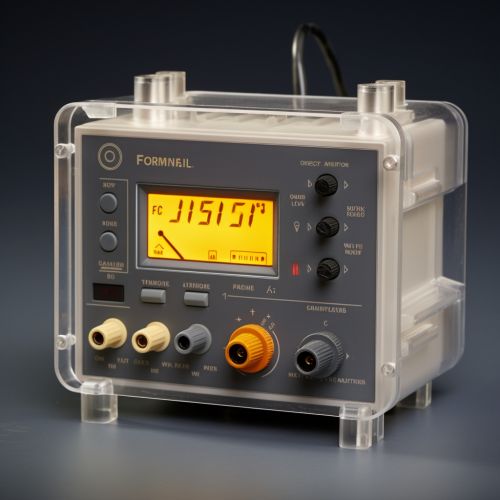Ohmmeter
Introduction
An Ohmmeter is an electrical instrument that measures electrical resistance, the opposition to an electric current. Micro-ohmmeters (microhmmeter or microohmmeter) make low resistance measurements. Megohmmeters (also a trademarked device Megger) measure large values of resistance. The unit of measurement for resistance is ohms (Ω).
History
The ohmmeter, named after the law formulated by German physicist Georg Simon Ohm, was invented in the early 19th century. Ohm's law states that the current passing through a conductor between two points is directly proportional to the voltage across the two points. This law laid the foundation for the development of the ohmmeter.
Principle of Operation
The basic principle of operation of an ohmmeter is that a voltage is applied across the terminals of the ohmmeter by an internal battery, and the resultant current is measured. The resistance is then calculated using Ohm's Law. The ohmmeter must be connected in series with the circuit being tested, so that the current will pass through the resistance.
Types of Ohmmeters
There are several types of ohmmeters, each designed for specific applications. These include:
- Analog Ohmmeters: These are the traditional types of ohmmeters. They use a moving coil meter to display the resistance value.
- Digital Ohmmeters: These ohmmeters use a digital display to show the resistance value. They are more accurate and easier to read than analog ohmmeters.
- Megohmmeters: These are used to measure very high resistance values, typically in the megaohm range. They are often used in electrical insulation testing.
- Micro-ohmmeters: These are used to measure very low resistance values, typically in the microohm range. They are often used in testing electrical connections and the resistance of conductors.


How to Use an Ohmmeter
To use an ohmmeter, the circuit power must first be turned off. The ohmmeter leads are then connected to the circuit or component whose resistance is to be measured. The ohmmeter is then turned on, and the resistance value is read from the display.
Applications of Ohmmeters
Ohmmeters are used in a wide variety of applications. They are used in electronics to measure the resistance of components such as resistors and to check the continuity of circuits. In electrical installations, they are used to measure the resistance of wires and cables, and to check the integrity of insulation. In the automotive industry, they are used to check the resistance of components such as ignition coils and spark plug wires.
